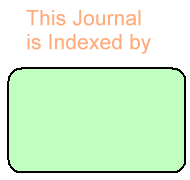Rukevwe Obie1,
Ehizokhale Santos Ehebha1,
Efe Endurance Ahama1 ![]() ,
Emmanuel Agbamu2,
Emmanuel Igho Odokuma1
,
Emmanuel Agbamu2,
Emmanuel Igho Odokuma1
For correspondence:- Efe Ahama Email: efeahama@gmail.com Tel:+234-7068538442
Received: 26 December 2024 Accepted: 16 April 2025 Published: 07 May 2025
Citation: Obie R, Ehebha ES, Ahama EE, Agbamu E, Odokuma EI. Structural and functional response of the genital tract to paraquat (PQ) dichloride exposure in female Wistar rats. Trop J Pharm Res 2025; 24(4):519-527 doi: https://dx.doi.org/10.4314/tjpr.v24i4.9
© 2025 The authors.
This is an Open Access article that uses a funding model which does not charge readers or their institutions for access and distributed under the terms of the Creative Commons Attribution License (http://creativecommons.org/licenses/by/4.0) and the Budapest Open Access Initiative (http://www.budapestopenaccessinitiative.org/read), which permit unrestricted use, distribution, and reproduction in any medium, provided the original work is properly credited..
Purpose: To investigate the structural and functional response of genital tract to paraquat (PQ) exposure in female Wistar rats. Methods: A total of 24 healthy female Wistar rats weighing between 150 - 180 g were grouped randomly into four equal groups. Group 1 served as control (received normal saline) while Groups 2, 3 and 4 were referred to as study groups and received 1, 5, and 10 mg/kg/bw PQ, respectively, once daily for 42 days. Blood samples (5 mL) were collected by cardiac puncture and centrifuged. Serum luteinizing hormone (LH), follicle-stimulating hormone (FSH), estrogen, and progesterone were quantified. The animals were sacrificed by cervical dislocation and the ovary and uterus were excised and processed using H & E staining. Results: Paraquat (PQ) disrupted the histoarchitecture of the ovary and uterus by inducing ovarian atrophy and chronic endometritis. Furthermore, PQ significantly increases serum levels of LH, FSH, estrogen, and progesterone compared to control (p < 0.05). Conclusion: Paraquat (PQ) induces ovarian atrophy, chronic endometriosis, and increases levels of LH, FSH, estrogen, and progesterone. Further large-scale studies in higher animals may be needed to validate these findings and provide a regulatory framework for PQ administration
Archives


News Updates